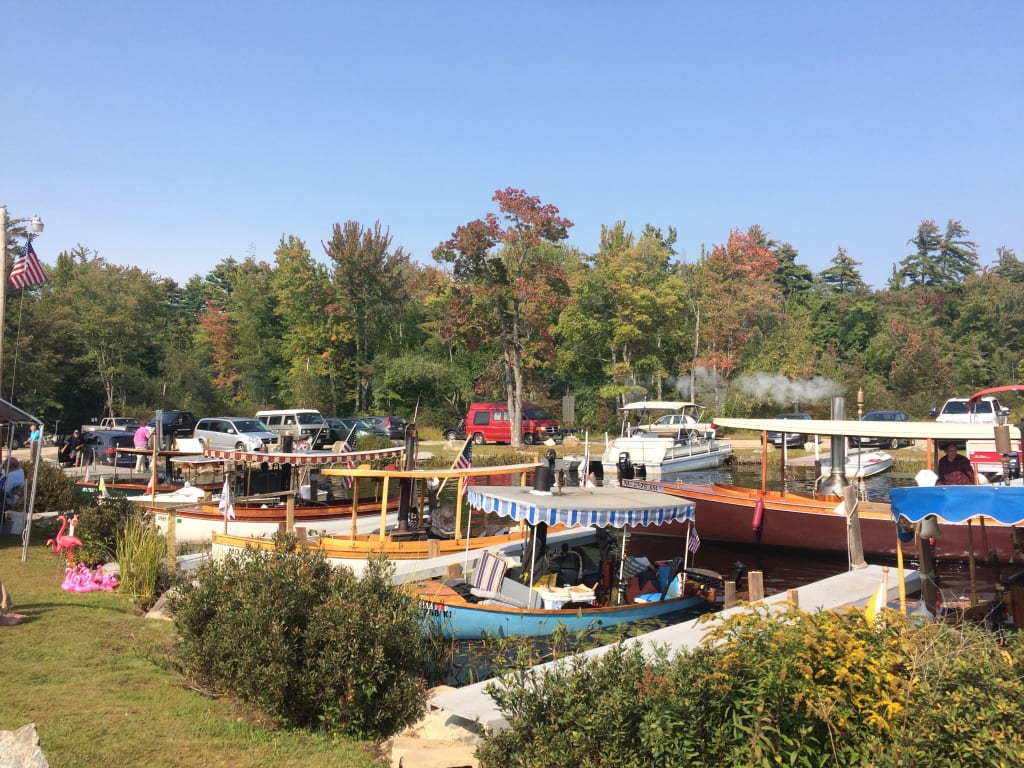
Waking up on a cold September morning, the valley of Post Mills, Vermont was socked in with thick, late-summer fog. Michael Libby, a visiting artist from Maine, and I rose with a purpose and trudged out to prep “The Uncle Sally,” a 14-foot, baby blue, experimentally built steamboat. The curious name is a wink and a nod to Samuel Morey, a local Vermont legend, whose boat “The Aunt Sally,” featured the first internal combustion engine to be used on a watercraft in the early 19th century.
It is an understatement to say that steamboats and their use (referred to as “Steaming”) have fallen out of vogue in the last hundred years. Yet, there is a microscopic percentage of the population that keep the tradition of slow moving, water-filled engines alive. Each year, the largest gathering of these enthusiasts takes place in Lees Mills, New Hampshire, an unincorporated village in the town of Moultonborough. Michael and I, along with The Uncle Sally’s owner, Brian Boland, were preparing to make the annual pilgrimage to the gathering, for a day of leisurely lake travel and communion with other New England steamers.
Preparing a steamboat is a messy task of greasing fittings, oiling joints, and loading the small, sooty firebox with wood. I learned the process under the guidance of Boland, who plies the waters of nearby Lake Fairlee in the craft. By the time the boat is ready, my hands are sticky and black, a quality that will remain throughout the day as I serve as the boat’s “fireman.”
It took nearly two hours to assure ourselves that the boat was properly prepped, loaded, and secured on its trailer for the 60 mile trip. Brian’s girlfriend, Tina, joined us and the four of us set off, towing The Uncle Sally behind Brian’s Chrysler Pacifica.
The Lees Mills boat ramp is set on a quiet lagoon on the furthest northern reaches of Lake Winnipesaukee, the largest lake in New Hampshire. By now the fog had broken and the sun shines down upon the little peninsula, ringed with steamboats ranging in colors and styles, some puffing steam from their active boilers.
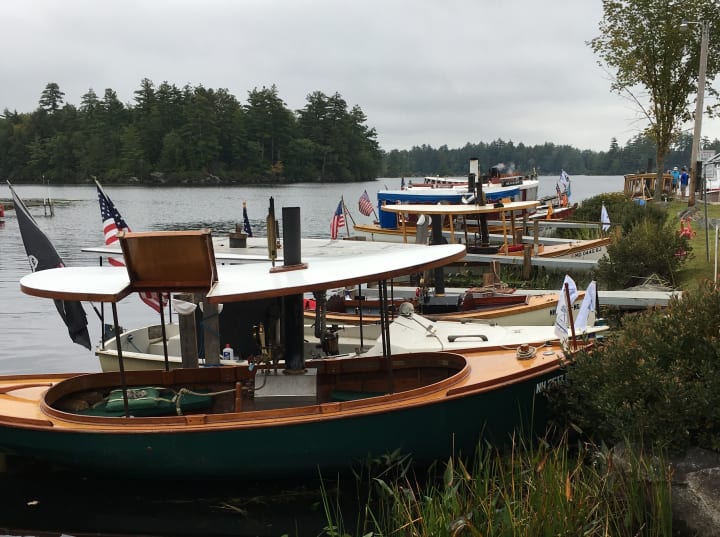
The Lees Mills Steamboat Meet was started in 1972 by Dave Richardson, who was born into the steamboat community and decided it needed a yearly gathering. He and his wife still attend the event, but leave most of the operations to the next generation of the Richardson family, with help from other active steamers. While originally run for only a weekend, the event has grown into a ten day festival, though The Aunt Sally only comes on the second Saturday, which is considered the climax of the festivities.
The steamer archetype is not too far removed from the stereotypical mountain man. They are generally past the age of fifty, bearded, and more contemplative than vocal. Seeking insight into what inspires someone to become a steamer I got such profound answers as: “It was something different,” “My grandfather did it,” and “I needed something to fix.” Any attempts to garner a more elaborate answer was met with a wary stare between puffs on a cigarette.
The spectators, or those that come to the meet but don’t own a steamboat, were a little more talkative.
“My dad’s always been an antique enthusiast,” explained one man from Boston, who was sitting in a lawn chair beside his wife, having a picnic and watching the steamboats cruise slowly around the lagoon. “He’s a friend of one of the steamboat owners and brought us up here a few years ago. We’ve been coming ever since. It’s such a relaxed setting and not something you see every day.”
For someone to stumble upon the Lees Mills Steamboat Meet without intending to would certainly be a trick. The Lees Mills boat ramp is well off the beaten path and promotion is nearly nonexistent.
“When I first started coming up to Connecticut in 1988 I would see this convoy of steamboats coming down route 91 and think: ‘Man, I must of missed something neat this past weekend,’” said Boland. “It wasn’t until the advent of the internet, when I could Google search ‘Steamboat events,’ that I was able to find out where this was.”
This secrecy is partly by design. The small boat ramp parking lot isn’t able to accommodate more than fifty cars, most of them occupied by the steamers and their families. Two portalets are the only available facilities and the only concessions are grilled up by the Richardson family. Throughout the day, curious boaters out on the lake who see and hear the steamboats follow them back to the lagoon, solving the issue of parking. However, too much boat traffic can be an inhibition for the steamboats, some of which are small enough to be seriously threatened by the large wakes of passing speedboats.
A lack of exposure has resulted in the fading of steamboats from public consciousness. These are complex mechanical devices and in the age of simplification, the joy of tinkering with archaic technology is left to specialists.
“It’s a lot of work,” said one local steamer. “You don’t just turn a key and buzz off. You need to load the firewood, monitor the pressure, and make sure your engine is running smoothly.”
On The Uncle Sally crew, these tasks fell to me. In a steamboat, the heat from the burning wood turns the water in the boiler into steam. Through pipes and valves, this steam is pushed into the working parts of the engine, which propels a crank and flywheel to provide the rotary motion of the propeller.
Failure to monitor the engine’s operation could lead to an engine failure. These are most often results of having too little water in the boiler or too much pressure going through the pipes. As the fireman, I open and close valves to build and relieve pressure as well as take on and release water. While it does involve a bit of thinking and vigilance, I find the joy of creating balance within a system quite rewarding and the end result is a relaxing boat ride, with the gentle cadence of the engine providing a rhythmic background.
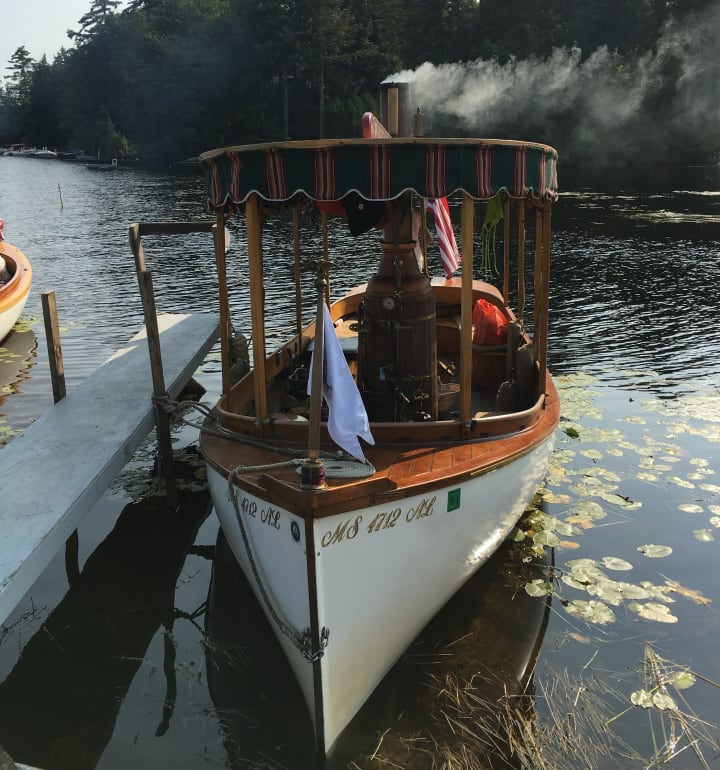
We ended up taking The Uncle Sally for three cruises throughout the day, exploring nearby coves and islands and socializing with boaters and lakeside residents. The Uncle Sally was one of the smallest of the 42 boats at the Lees Mills meet and crawled along somewhere between 2 and 3 miles per hour. While this performance may leave something to be desired for us it was the nature of the activity, its uniqueness and history, that made the trek enjoyable.
Coming back from our final cruise, a sunset jaunt of just over half an hour, we found nearly all of the steamboats sitting dormant and the steamers gone to dinner offsite. Besides ourselves, the only boat left active was one built by Colt Stewart, 21, of Athol, Massachusetts.
Colt is instantly distinguishable in the steamboat community for his age and renown for building steam engines. Earlier in the day, he came over as I prepped The Uncle Sally to check out the machine and introduce himself. However, it was not until later that I learned of his penchant for steam propulsion, which he has exhibited in the building of a mini steam locomotive as well as his watercraft.
“I love these things,” he said, as he knelt on the dock to peak at The Uncle Sally’s mechanics. “I just finished my own and today’s the first day it’s been in the water.”
Despite his quiet humility, I could see the glint of enthusiasm in his eyes. He will be a lifelong steamer, one of a dying breed that will keep Lees Mills at the center of the small steamboat world for decades to come.
As we pulled the steamboat back onto its trailer, the sun set on the Lees Mills boat ramp and the four of us made our way back towards Vermont. After a long day on the water, we happily felt that we had recalled an old magic from a simpler time. This was something different and something beautiful, a means of slowing down in the midst of our hectic present, and we were grateful for that sojourn on the waters of Winnipesaukee.
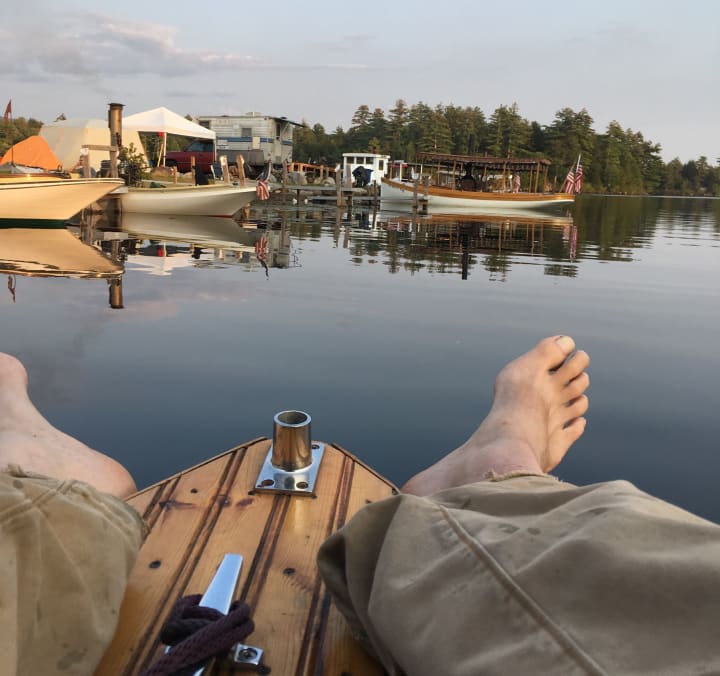
About the Creator
Jordan Long
Jordan Long is a writer, pilot, and adventure enthusiast living in Phoenix, Arizona. He blogs about travel, hiking, skiing, flying, the arts, the environment, and everything in between.

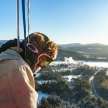




Comments
There are no comments for this story
Be the first to respond and start the conversation.